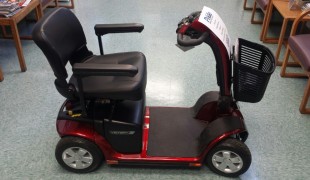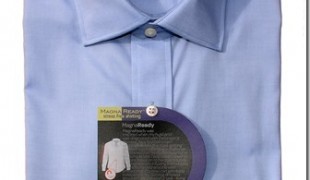- 4903
- 340
- 12
- 13
- 0
- Help Ukraine
About the solution
Adriana was diagnosed with cerebral palsy.
She brought her idea to an assistive technology hackathon at MIT in February 2015. Partnering with MIT students, and benefiting from sponsors’ equipment donations, they developed a prototype of a wireless sip and puff joystick for android, allowing users to navigate their phones and interact with the multitude of apps, so users can control their environment.
Her love for technology started at age seven, when her occupational therapist introduced her to assistive tech that allowed her to use a computer by herself. And from that moment on, Adriana knew what independence was and she became keen to be independent.
She thought about creating something that combined her passion for traveling with her power chair.
“Having a disability pushed me to be innovative in my approach to everything.(...)I love to travel, but typically don’t bring my power chair for various reasons, and as a result, I’m cut off from everything – like everyone else these days, I’m dependent on personal electronics and the need to always stay connected. I had the opportunity to submit my idea for a chance to participate in the 2015 MIT Assistive Technology Hackathon. I was one of 13 people chosen and won first place. Four talented MIT engineering students took my vision and built a prototype”, Adriana explained.
“Puffin became a MassChallenge Boston 2017 finalist. It is incredible to finally see my vision come to fruition!”
From there, Adriana formed a team with Shana Penna, her co-founder who joined the project after did an interview to Adriana about hackathons as part of her thesis for MBA.
Puffin is working to address the need of diverse users, which necessitates sophistication in the sip and puff solutions. Also, they aim to have sensitivity for lung capacity for different users, or for the same user who might have a different level of lung capacity on a different day.
Adriana is a pioneer and early adopter of many assistive technologies, currently has bluetooth on her power wheelchair, enabling phone and TV controls, but she wants an inexpensive solution for when she travels with her manual wheelchair.
Adapted from:
http://bit.ly/2zH1EO5
http://bit.ly/2gZTNTW
More info:
http://bit.ly/2isJpbd
http://bit.ly/2zviDC5
http://bit.ly/2hXukKH
这些解决方案不应包括使用药物,化学品或生物制品(包括食品);创伤性设备;冒犯性的,商业或内在危险的内容。该解决方案未经医学验证。请谨慎进行!如果您有任何疑问,请咨询健康专家。
-
-
756
-
0
-
16941

Proloquo2Go – App to help people communicate
CAREGIVING
COMMUNICATION: Communicating, whether by speaking, listening, or other means
Social interaction
Paralysis
Autism
Cerebral Palsy
Brain Stroke
Brain Injury (Abscess, Brain Barrier Defect, Brain Contusion, Brain Hemorrhage, Brain Edema)
Assistive Daily Life Device (to help ADL)
Assistive Technology access
App (Including when connected with wearable)
Tremors
Muscle cramps or spasms
Difficulty coordinating movements
Muscle weakness
Difficulty speaking or understanding speech
Trouble with fine motor skills (e.g., writing, buttoning clothes)
Twitching or involuntary movements (myoclonus)
Acquired language impairment (Aphasia)
Promoting self-management
Managing Neurological Disorders
Building Supportive Community Relationships
Promoting inclusivity and social integration
Improving Speech and Communication
Caregiving Support
Clinical Pathology
Medical Genetics
Neurology
Pediatrics
Rheumatology
Netherlands
-
-
-
628
-
0
-
8777

Drive-Master - adaptive mobility equipment
MOVING IN A WHEELCHAIR: Moving using a wheelchair.
WALKING WITH A WALKING AID: Walking with a walking aid
CAREGIVING
Polio
Assistive Daily Life Device (to help ADL)
Walking Aid (wheelchair/walker/crutches)
Muscle cramps or spasms
Difficulty coordinating movements
Stiffness or rigidity (difficulty moving)
Paralysis of the legs and lower body
Muscle weakness
Restoring mobility
Promoting self-management
Managing Neurological Disorders
Promoting inclusivity and social integration
Caregiving Support
Neurology
Physical Medicine and Rehabilitation
Rheumatology
United States
-
-
-
753
-
0
-
13505

MagnaReady® - adaptative clothing for people who struggle with fine motor skills
Grip
CAREGIVING
Parkinson's Disease
Body-Worn solutions (Clothing, accessories, shoes, sensors...)
Assistive Daily Life Device (to help ADL)
Tremors
Stiffness or rigidity (difficulty moving)
Trouble with fine motor skills (e.g., writing, buttoning clothes)
Promoting self-management
Managing Neurological Disorders
Promoting inclusivity and social integration
Caregiving Support
Internal Medicine
Neurology
Physical Medicine and Rehabilitation
Rheumatology
United States
-
 zh
zh